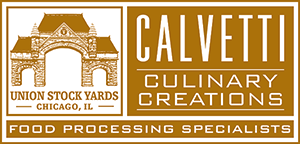This post was first published by Jamie Calvetti on LinkedIn
I’ve seen many companies boast about sous vide “style” products and tout the consumer-deceiving benefits of steaming or boiling products in a bag as a way to save on the bottom line.
It doesn’t sit well with me.
Imitation isn’t Flattery– it’s Bad Business
Sous vide “style” products are an example of jumping on a food fad but not actually delivering what partners or customers are asking for. There is no true value in a product that aims to replace something without actually being comparable.
Real sous vide products get you much more than nickels and dimes and a marketing scheme. It gets you what your customers really want: nutrition-rich, color and mouthfeel-preserved, delicious food. And it gets you want you really want: a value-added product that doesn’t sacrifice time, cost or caliber. That is what gets you a menu and reputation that outlasts trends.
Here’s a more in-depth breakdown.
Sous Vide Cooking
As with many other innovations, sous vide cooking came from Europe. It involves prepping the food (pre-searing a steak, for instance), vacuum sealing it and slowly cooking it in a low-temperature water bath. Afterwards, it’s chilled or frozen until reheating for the end customer.
This process gives retailers and customers:
● extremely precise cooking
● improved food safety
● flavor retention
● nutrient retention
● pleasing textures
● extended shelf-life without added preservatives
● more efficient preparation
● uniformity and consistency
Consumers are demanding clean, real and authentic food. Sous vide gives it to them without making it harder on the vendor or sacrificing values. It’s a no-brainer solution for consumer-packaged RTE goods and for industries like travel and hospitality where there are inherent barriers to meet changing food expectations.
Sous Vide “Style” Cooking
The food is prepped, placed in a bag and eventually frozen. That’s about all sous vide “style” has in common with the true technique. When a product or institution goes the “style” route, the cooking process is not the same. Typically, these impostors are either cooked at higher temperatures (if not outright boiled) or steamed. Taking this short cut means having to use additives to fake slow-cooked flavors and it also means sacrificing the very characteristics that make sous vide so special. Texture, flavor, nutrition and overall quality take a hit.
Running with this type of imitation product was one of the many bad decisions that plagued Quantum Foods. That should be an immediate red flag for anyone exploring sous vide “style” products.
They’re Not Interchangeable
There is a time and place for steamed-in-a-bag food, but it’s certainly not competing alongside sous vide. You wouldn’t use stainless steel in place of real steel and you shouldn’t use steam cooked food in place of sous vide entrees. Because they serve different purposes and deliver different results, they’re simply not interchangeable.
Let’s call it what it is: Imitation Sous Vide or, better yet, Just Another Steam Cooked Meal.

